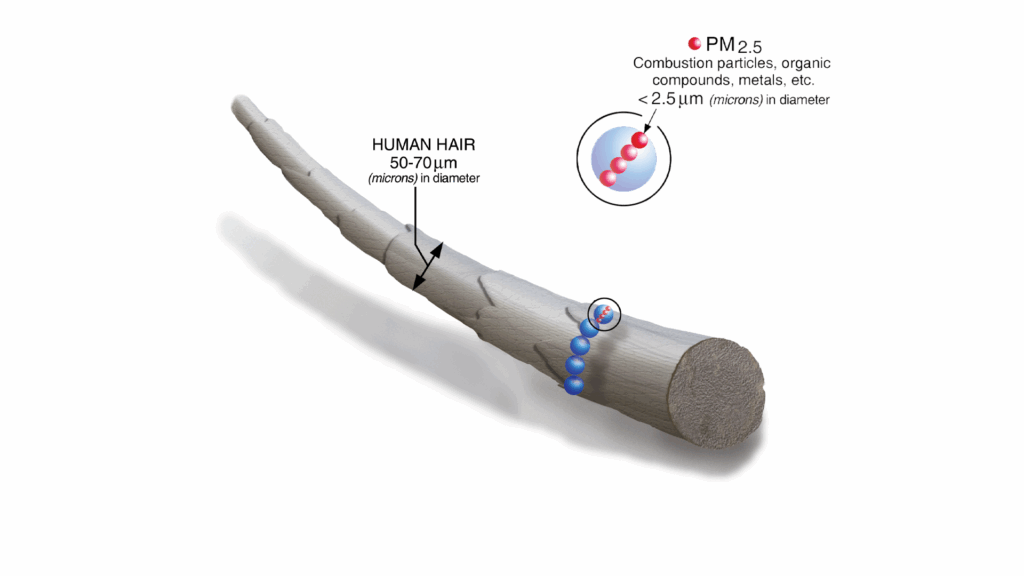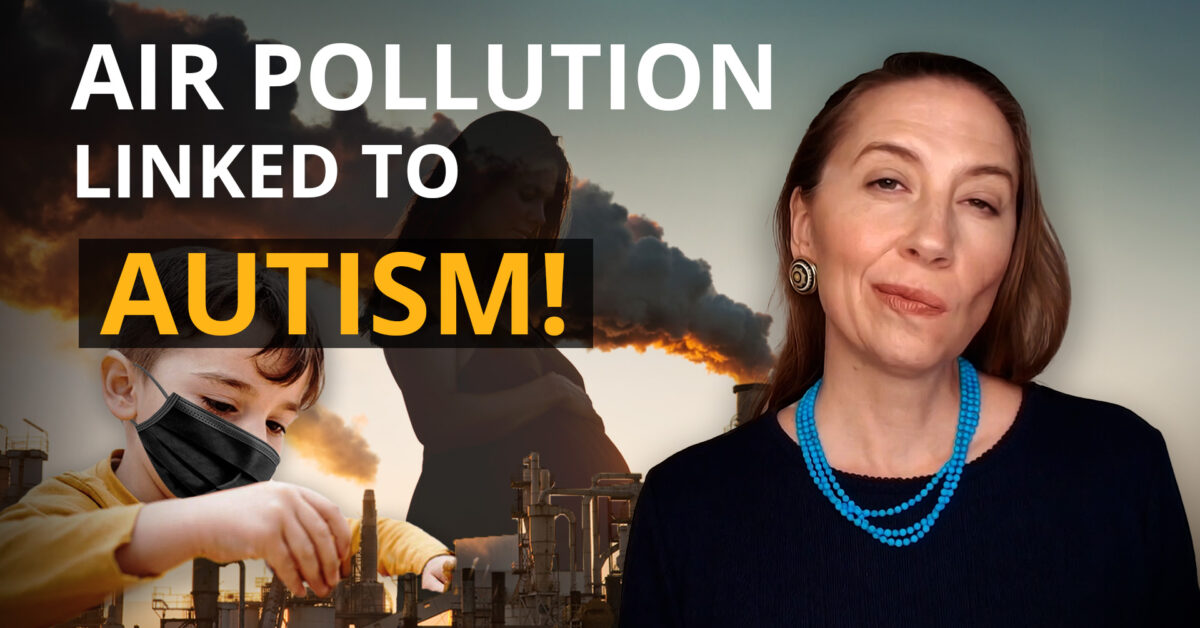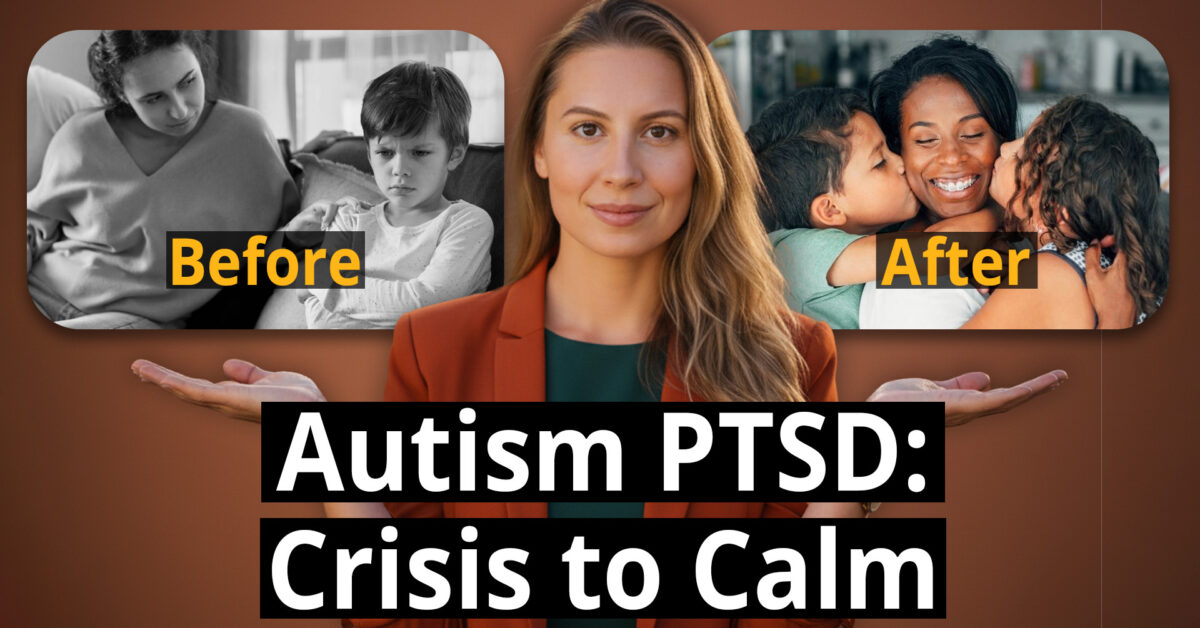Even safe air pollution may increase autism. Today, we are diving into some powerful science from Harvard’s School of Public Health and a Large-Scale Systemic Review and Meta-Analysis on Air Pollution and Autism Risk in Children.
This research asks an important question. Could the air we breathe before and right after birth influence the likelihood of autism?
The Big Picture
The Big picture. Genetics is certainly important in an autism diagnosis, but it is not the sole driver of all autism. Doctors and scientists have long suspected that environmental exposures matter in regard to autism. One of the biggest issues, air pollution. Specifically, the focus is on particulate matter. These are very tiny particles in the air that we breathe, and they’re often labeled and abbreviated PM 2.5. That means particles that are less than 2.5 micrometers, which is about one-thirtieth the width of a human hair. So think about that. One little piece of hair and one-thirtieth of one piece of hair. Those are very, very small particles. You’re not really going to be able to see them.

Sources of PM 2.5
These particles come from car exhausts and industrial emissions, and wildfires are a huge source, as even household burning. Because they’re so small, PM 2.5s can actually pass through the lungs, so you breathe them in, pass through the lungs, and enter the bloodstream. So now these small particles can go anywhere in the body. If you’re pregnant, they can cross the placenta and even reach the fetal brain.
The Meta-Analysis: What the Researchers Found
Let’s find out the conclusions for this meta-analysis. So the researchers pulled data from 11 studies, which means that they included over 313,000 children across five different countries. This research was not just on the US.
Here are the key findings.
- For prenatal exposure, every increase of 10 micrograms per cubic meter of PM 2.5 was linked with a 31% higher risk of autism. Again, this is risk, this is not causation, it’s risk.
- Now, timing during pregnancy matters, so the strongest association of this risk was during the third trimester of pregnancy.
- Early childhood exposure, so the first few years of life, the risk was even higher. We can ease up a little bit on putting a lot of the guilt and the pressure on pregnant moms. They are doing their best.
The research here showed that the risk was even higher in early childhood exposure. There was a 64% increased risk for this same pollution increase. Early childhood really matters for toxin exposure, specifically PM 2.5.
Even “Safe” Levels Can Pose a Risk
Now, maybe you’re thinking, Oh, well, I’m not living where air pollution is a problem. The research also showed that risks did appear even at what they call background levels.
So levels as low as 8 micrograms per cubic meter, which is actually below the US EPA’s annual standard of 12 micrograms per cubic meter. So this means even families living in areas that are considered safe for air quality could still face elevated risks.
Biological Mechanisms
You might be wondering, Okay, how exactly could air pollution influence brain development?
PM 2.5, like I said, can penetrate the lungs, get into the bloodstream, and then really cause a lot of inflammation and oxidative stress. It can also disrupt the blood-brain barrier.
PM 2.5 has been detected in the placenta and fetal brain tissue, suggesting direct exposure before birth.
These mechanisms line up with what we know about the sensitive windows of brain development. Late pregnancy, early childhood are periods where the child is rapidly growing, so those are the times to be extra vigilant.
Why This Study Matters
Past studies have given mixed results. Again, this is a meta-analysis, so it’s combining 11 different studies. Some of those studies showed a link, and others did not.
This meta-analysis is the most comprehensive to date, and it carefully separates the exposure windows and includes only studies with a validated autism diagnosis. So by pooling these large numbers of children, it gives us a much clearer signal. And that signal is that air pollution, especially fine particles, is consistently linked with higher autism risk.
What This Means for Families
Now, what does this mean for you as a family? Let’s just pause for a second because I know this can feel overwhelming. Parents already have so much responsibility and so many worries, and the idea that something as invisible as air pollution can affect our children it’s quite heavy. The good news is that studies like this help us identify preventable risk factors. Certainly, communities can push for cleaner air, policy changes, and better monitoring.
On a family level, simple steps like using high-quality medical-grade air filters indoors, especially while sleeping, are one thing to do. You can avoid outdoor activity during high pollution days on our phones; a lot of times our weather app has the air quality, so we can just check it down there.
If you’re pregnant or you have a little one, consider it. Is it really worth going outdoors if the air quality is not good?
The Final Takeaway
The Harvard team concluded that this meta-analysis concluded that PM 2.5 exposure was associated with increased risks of autism in children, particularly with exposure windows during the third trimester and early childhood periods.
The effects of PM 2.5 exposure per 10 microgram increment revealed an exposure-responsive manner. Their findings also suggested that PM 2.5 exposure could possibly affect vulnerable populations at a much lower PM 2.5 background level.
Now, there’s an association between exposure. So this doesn’t mean pollution causes autism directly. Autism is complex. We know that it involves many genetic and environmental factors.
But this research does highlight one piece of science that we can actually do something about.
Confused by all the information about autism? I’ve got you. Click the link to see how we can work together. Let me break down the science and provide you with clear, actionable steps to make your path forward easier.




